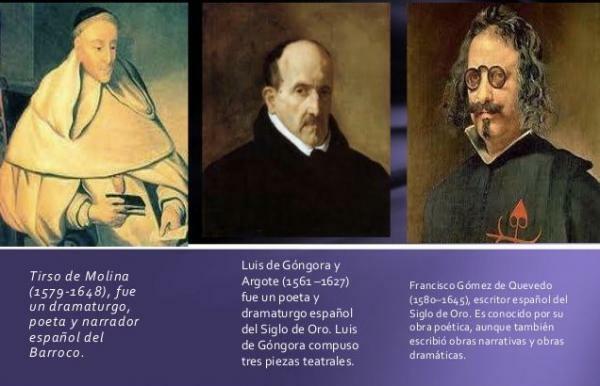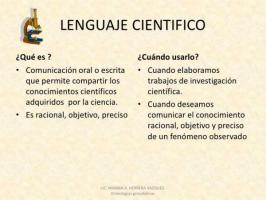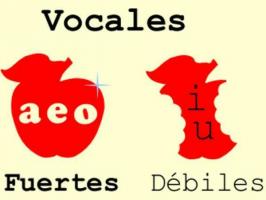6 AUTHORS of Spanish BAROQUE literature and their most outstanding WORKS
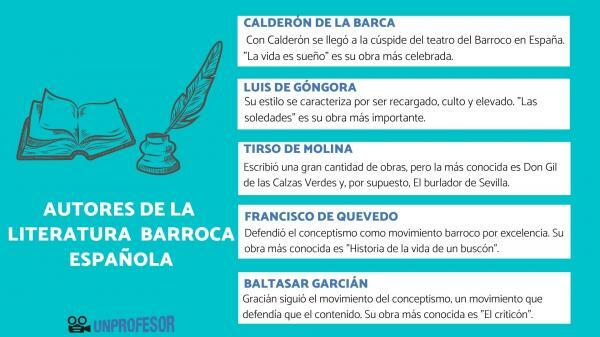
Within the period known as Spanish Golden Age There were two clearly differentiated trends: Renaissance literature, typical of the first period, and Baroque literature, typical of the second period. Therefore, the Baroque in Spain was a very prominent movement that has such important names for the history of literature as is Góngora, Quevedo or, of course, Calderón de la Barca. In a PROFESSOR we want to discover you main authors of Spanish Baroque literature and their works so that, thus, you get to know better this time in history and the most established artists of the moment.
Before starting to talk about the authors of Spanish Baroque literature and their works, it is important that we stop briefly to know the Characteristics of Baroque literature. In this way, we can get closer to this artistic and aesthetic current that so much influenced the general art world: painting, music, architecture, etc.
The Baroque was a movement that began to end of the XVI and expanded in Europe until the beginning of the XVIII,
before the arrival of the Enlightenment. This era is marked by widespread disappointment: after the Renaissance, a movement inspired by the classics and where beauty, nobility and great deeds are enhanced, we are now betting on a more real vision of life and society. A most disenchanted vision in which hunger, disease and poverty are the protagonists.The Baroque coincides with a period in history in which there is a social, religious and economic crisis, elements that are basic to understand the new spirit of baroque artists and their peculiar vision of the world.
The main features of Baroque literature are the following:
- It's a rejection of preciousness typical of the Renaissance.
- Bet on a complex writing make it more aesthetic and cultured, therefore, rhetorical figures abound.
- Exaggerated art. Baroque art is exaggerated and extreme, full of ornamentation and with a strong aesthetic impact that you can like or dislike in equal parts. They are looking for that: impact.
- Trend pessimistic by a general disenchantment with life and classical art.
- Large ornamentations artistic that, in the literary field, is seen above all in the theater and the striking and overloaded sets of it.
- Religious influence in the literary arts, due to the crisis that Christianity experienced with Luther's reform that shook the life of European society and the foundations of beliefs.
We are already starting to meet the authors of Spanish Baroque literature and their works to tell you about the most representative author of this movement: Calderón de la Barca. In fact, it is curious that he is the highest representative when, in reality, Calderón was the last consecrated baroque artist known in Spain. And furthermore, with his death it is marked the end of the Spanish Golden Agel. However, it is with this artist that the maximum splendour of baroque literature and theater.
Calderón was a recognized poet and playwright of the seventeenth century, but he also worked as a Catholic priest (hence the religious influence of some of his works). The basis of his theater is found in the literary innovations proposed by Lope de Vega and his New Art of Making Comedies, where the author bet on a type of theater that was different from the one contributed by Aristotle and that was adapted to modern society.
With Calderón the peak of the Baroque theater was reached in Spain and his works are totally framed within the baroque character: pessimistic works, with a strong influence of God and religion, with a cultured and overloaded language and with staged spectacular.
Within the Calderón's best known works, we highlight:
- The life is dream
- The goblin lady
- The great theater of the World
- Count Lucanor
- The mayor of Zalamea
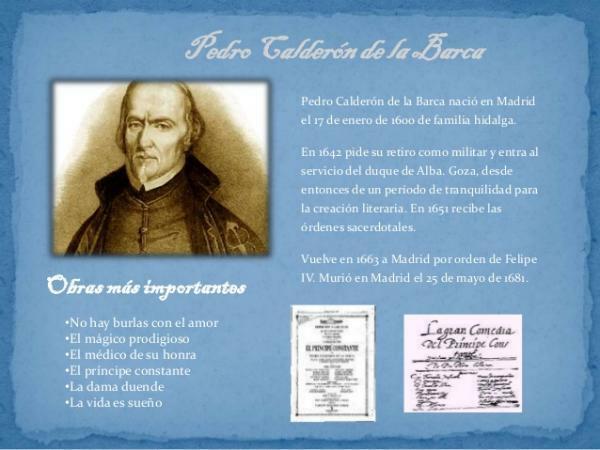
But, in addition to Calderón, there are other important authors of Spanish Baroque literature that we must know and study. Here we leave you some of the most prominent and influential in the history of literature.
Luis de Góngora (1561-1627)
Gongora It's one of the most important baroque authors country. In fact, he was one of the first great names linked to this artistic trend and, therefore, one of the Baroque movements bears his name: the gongorismo or culteranismo. His style is characterized by being overloaded, cultured and elevated, a type of text in which the form is more important than the content. The Solitudes by Góngora it is one of his most important works.
Tirso de Molina (1579-1648)
Of course, we could not forget Tirso de Molina, another of the great names in Spanish Baroque literature. We are before an author who, above all, stood out in the dramatic genre. He wrote a large number of works, but the best known is Don Gil de las Calzas Verdes and, of course, The Trickster of Seville.
Francisco de Quevedo (1580-1645)
TheQuevedo and Góngora rivalry it is well known in the history of literature. And it is that Quevedo, much younger than Góngora, attacked this great poet and defended the concept as a baroque movement par excellence. Quevedo was a highly talented prose writer who wrote works on many subjects (religious, philosophical, political, etc.). His best known work is Life story of a buscón.
Baltasar Gracián (1601-1658)
We continue to discover the main authors of Spanish baroque literature to talk about Gracián, a very prominent author in the field of didactic prose and philosophical prose. Unlike Góngora, Gracián followed the movement of the concept, a movement that defended that the content and the form had the same importance. His best known work is The critic.
Francisco de Rojas Zorrilla (1607-1648)
We finish this review of the authors of Spanish Baroque literature and their works by talking about Francisco by Rojas Zorrilla, a writer from Toledo who stood out in the world of literature with a play: Persiles and Sigismund (1633), a comedy that was very successful. However, Rojas Zorrilla had previously worked with great writers of the stature of Calderón de la Barca, with whom he collaborated in The monster of fortune. His style was characterized by being very satirical, so much so that it created a great controversy in some recitals and literary meetings.
